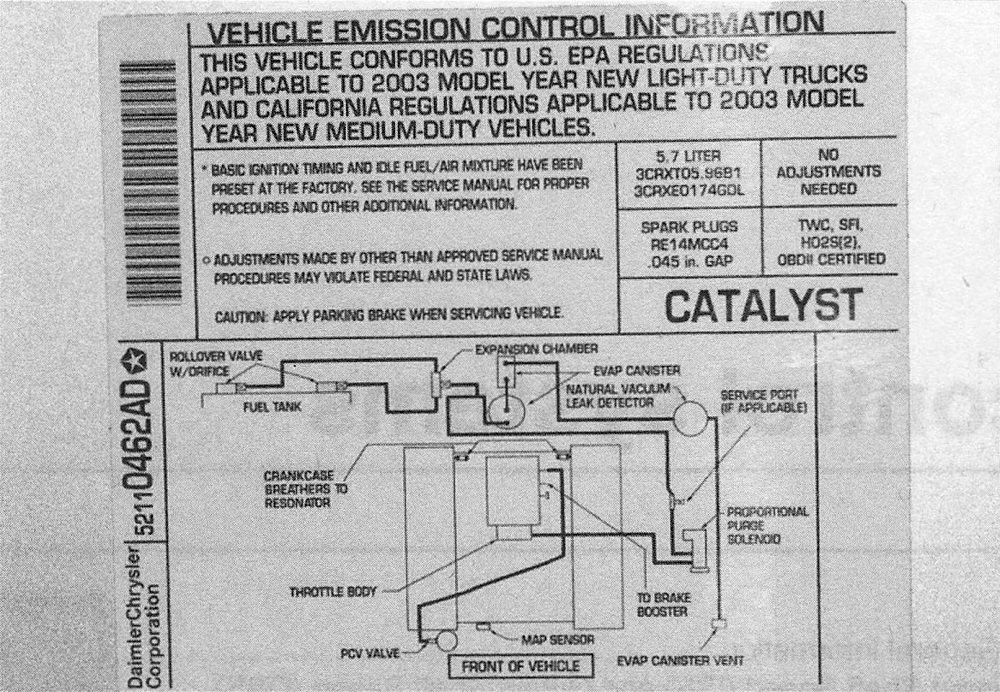Emissions and engine control systems
To prevent pollution of the atmosphere from incompletely burned and evaporating gases, and to maintain good drivability and fuel economy, a number of emission control systems are incorporated on the vehicles covered in this manual. These emission control systems and their components are an integral part of the engine management system. The engine management system also includes all the government mandated diagnostic features of the second generation of on-board diagnostics, which is known as On-Board Diagnostics II (OBD-II).
At the center of the engine management and OBD-II systems is the on-board computer, which is known as the Powertrain Control Module (PCM). Using a variety of information sensors, the PCM monitors all of the important engine operating parameters (temperature, speed, load, etc.). It also uses an array of output actuators – such as the ignition coils, the fuel injectors, the Idle Air Control (IAC) motor, the Torque Converter Clutch (TCC) and various solenoids and relays – to respond to and alter these parameters as necessary to maintain optimal performance, economy and emissions. The principal emission control systems used on the vehicles covered in this manual include the:
Catalytic converters
Evaporative Emission Control (EVAP) system
Exhaust Gas Recirculation (EGR) system Positive Crankcase Ventilation (PCV) system
Torque Converter Clutch (TCC) system
The Sections in this Chapter include general descriptions and component replacement procedures for most of the information sensors and output actuators, as well as the important components that are part of the systems listed above. Refer to Chapter 4 for more information on the air induction, fuel delivery and injection systems and exhaust systems, and to Chapter 5 for information on the ignition system. Refer to Chapter 1 for any scheduled maintenance for emission-related systems and components.
The procedures in this Chapter are intended to be practical, affordable and within the capabilities of the home mechanic. The diagnosis of most engine and emission control functions and drivability problems requires specialized tools, equipment and training. When servicing emission devices or systems becomes too difficult or requires special test equipment, consult a dealer service department.
Although engine and emission control systems are very sophisticated on late-model vehicles, you can do most of the regular maintenance and some servicing at home with common tune-up and hand tools and relatively inexpensive digital multimeters. Because of the Federally mandated extended warranty that covers the emission control system, check with a dealer about warranty coverage before working on any emission-related systems. After the warranty has expired, you might want to perform some of the component replacement procedures in this Chapter to save money. Remember that the most frequent cause of emission and drivability problems is a loose electrical connector or a broken wire or vacuum hose, so before jumping to conclusions the first thing you should always do is to inspect all electrical connections, electrical wiring and vacuum hoses related to a system.
Pay close attention to any special precautions given in this Chapter. Remember that illustrations of various system components might not exactly match the component installed on the vehicle on which you’re working because of changes made by the manufacturer during production or from year to year.
A Vehicle Emission Control Information (VECI) label (see illustration) is located in the engine compartment. This label contains emission-control and engine tune-up specifications and adjustment information. It also includes a vacuum hose routing diagram for emission-control components. When servicing the engine or emission systems, always check the VECI label in your vehicle. If any information in this manual contradicts what you read on the VECI label on your vehicle, always defer to the information on the VECI label.
1.7 The Vehicle Emission Control Information (VECI) label, located in the engine compartment, contains information on the emission devices installed on your vehicle and a vacuum hose routing schematic
